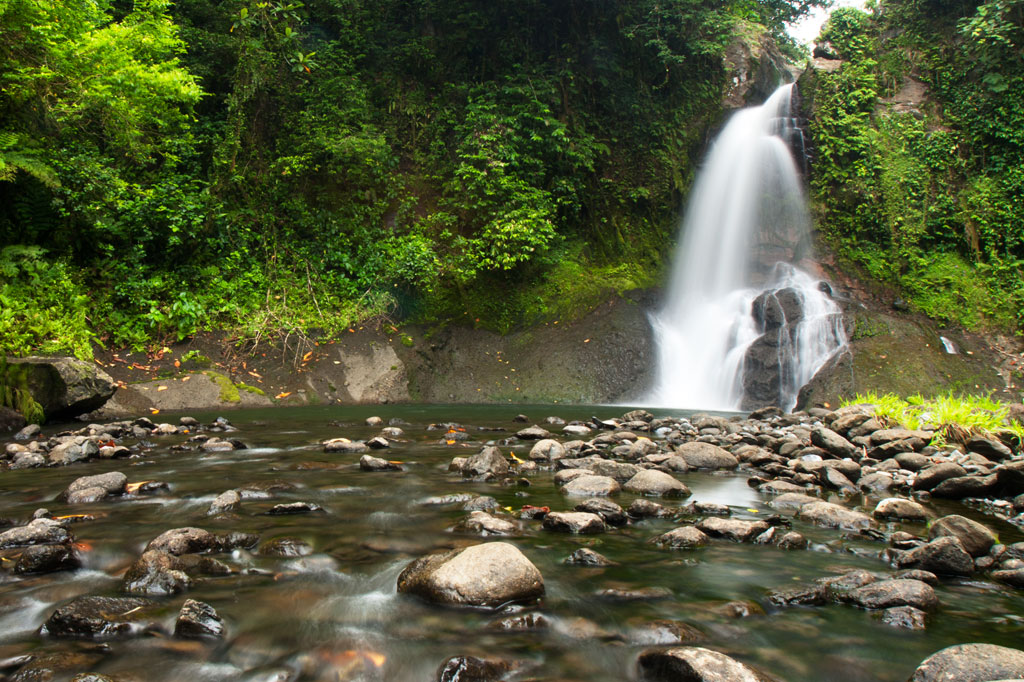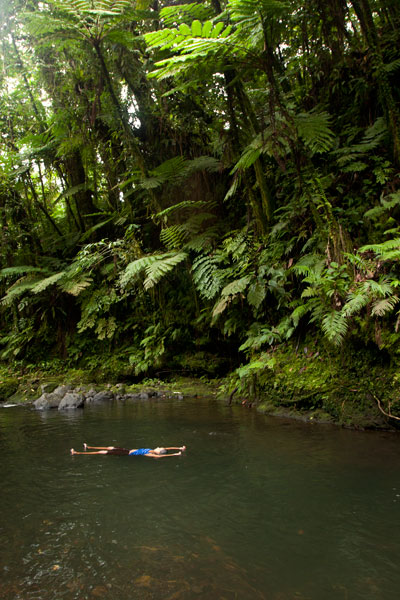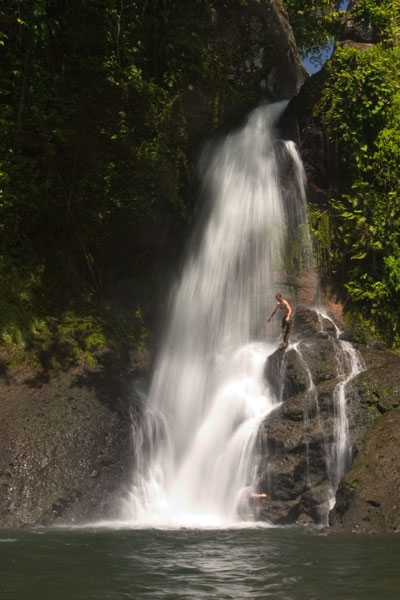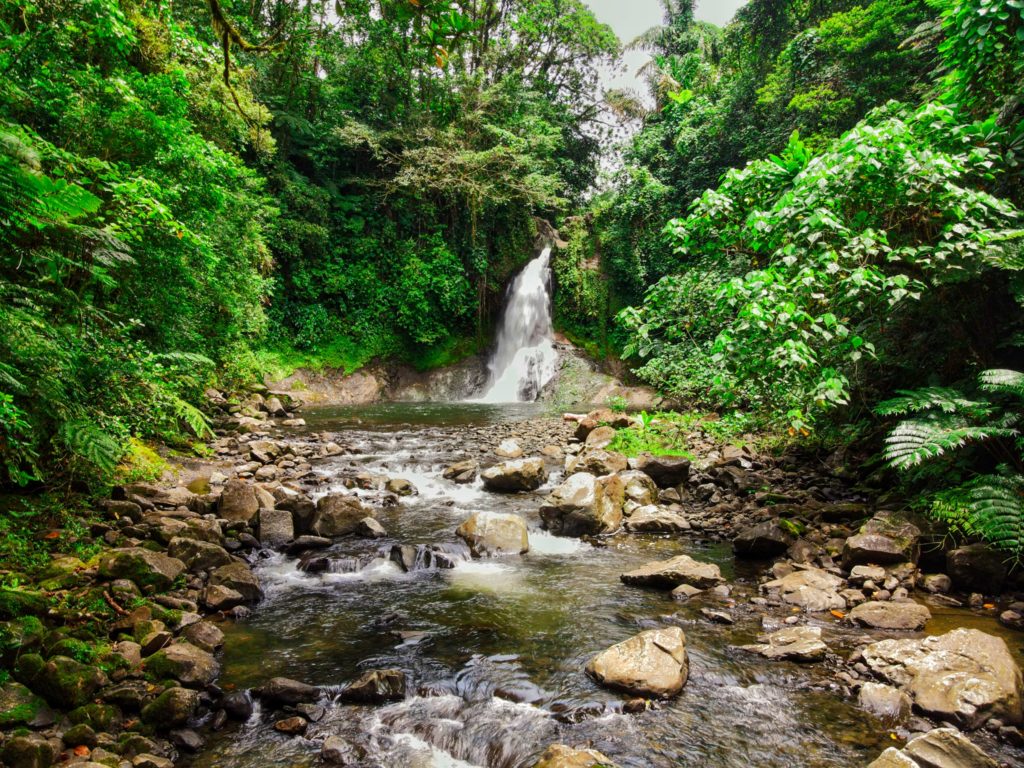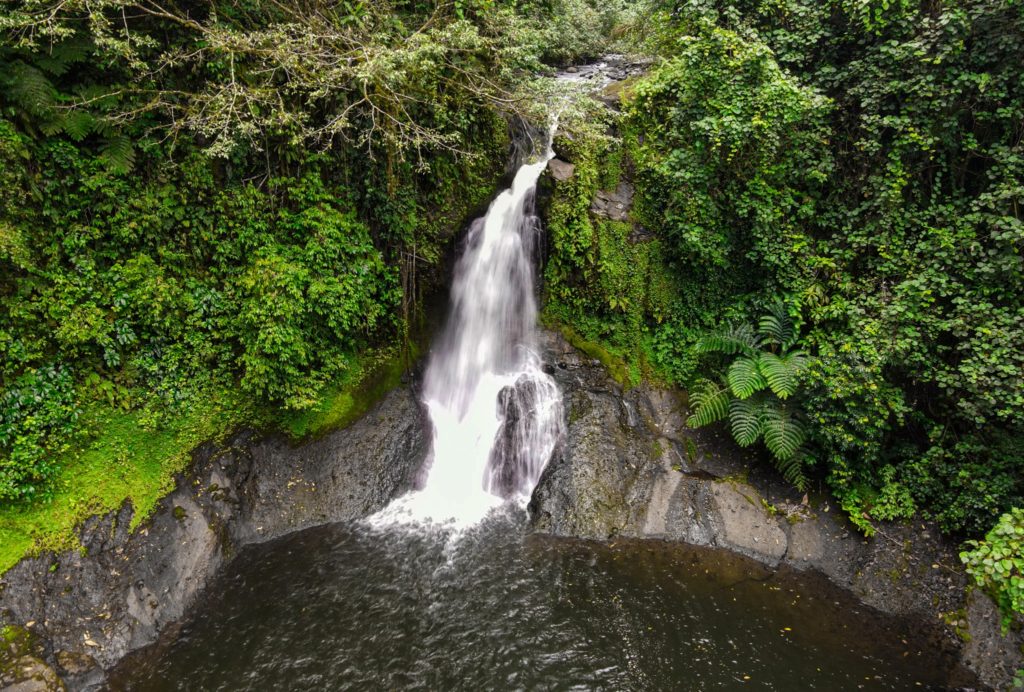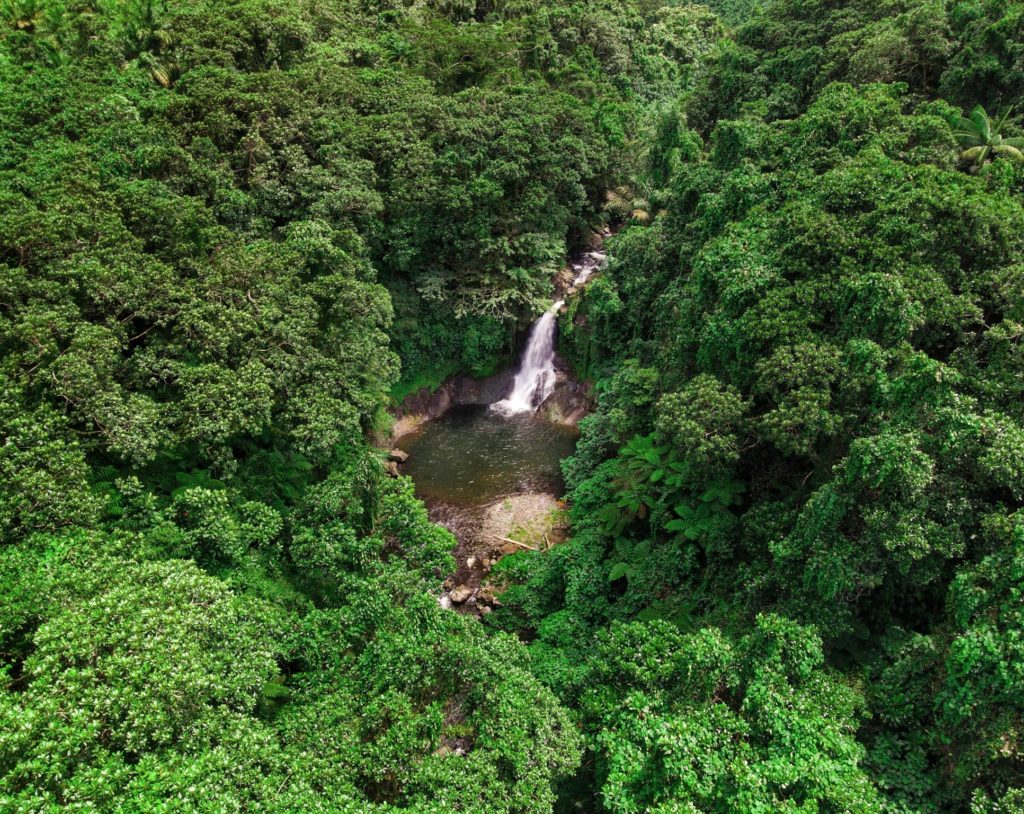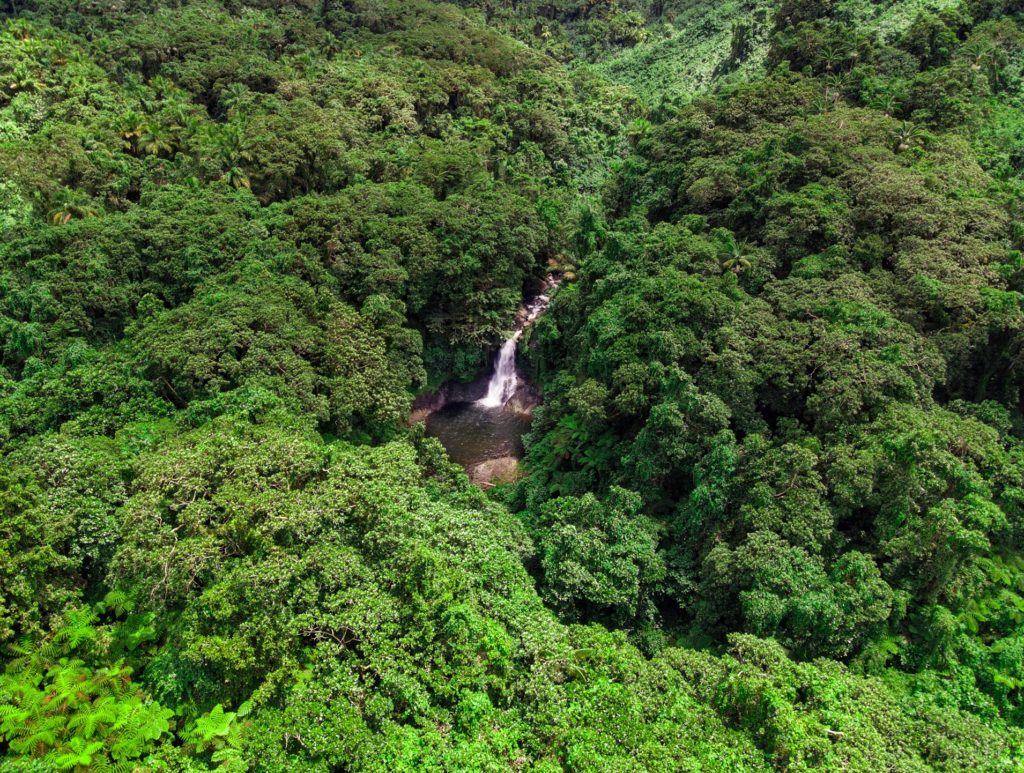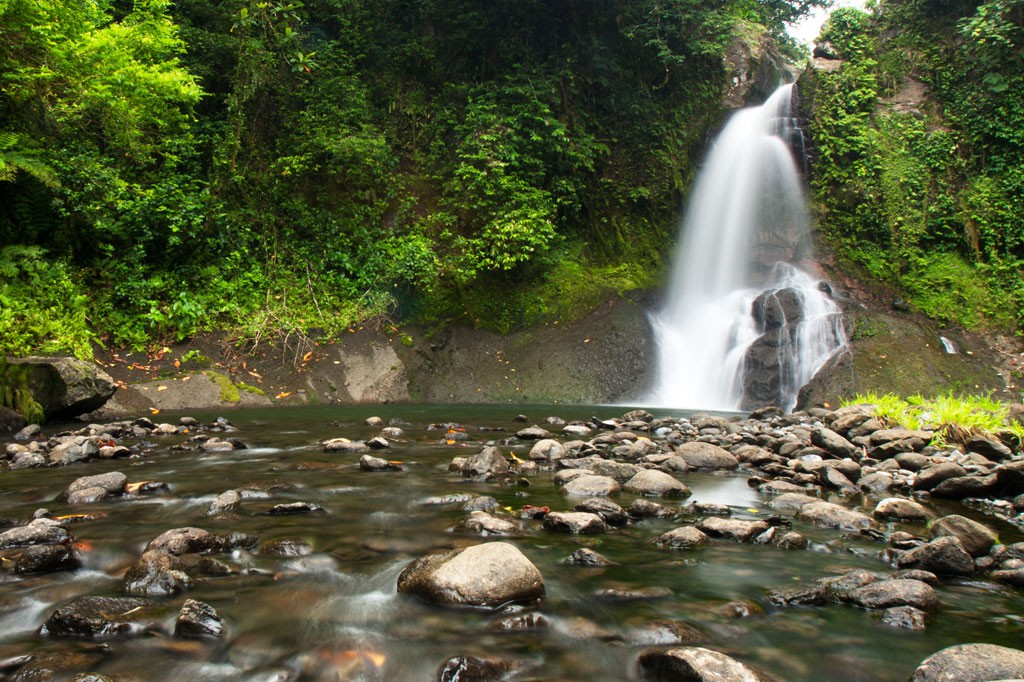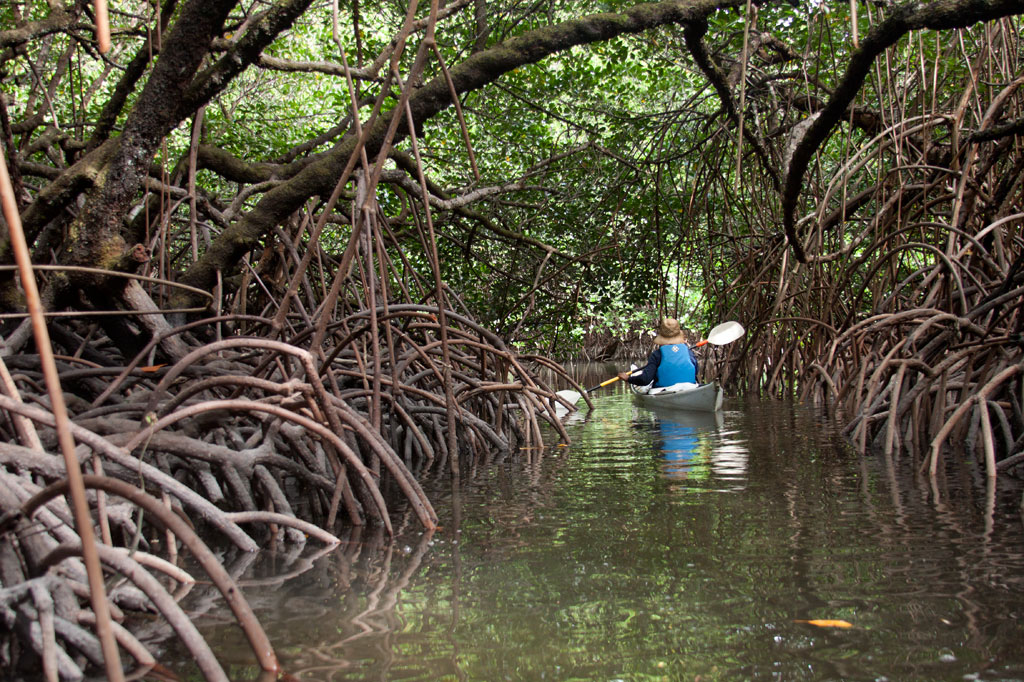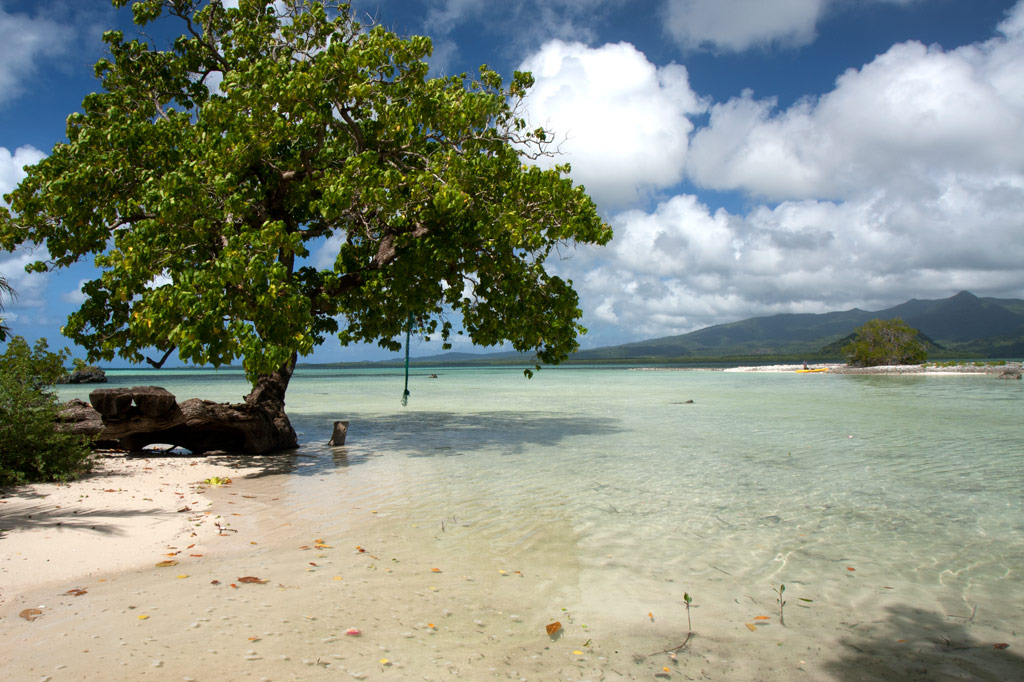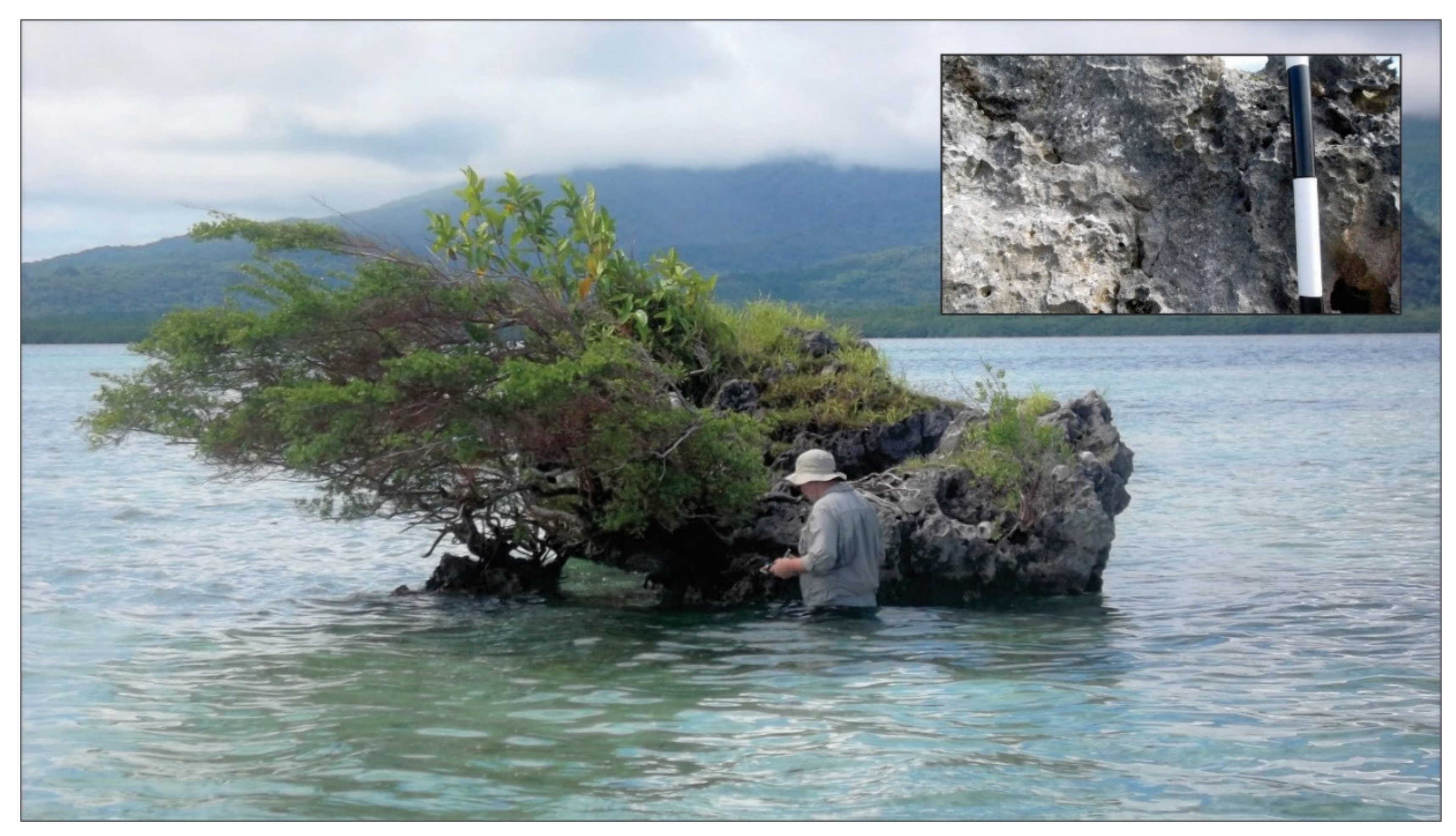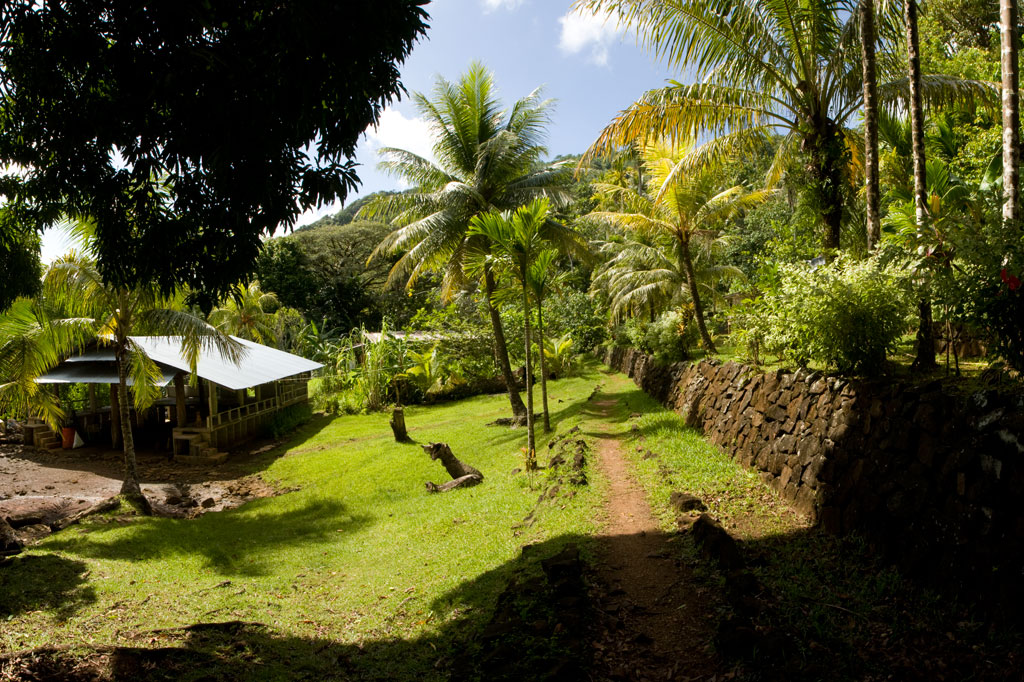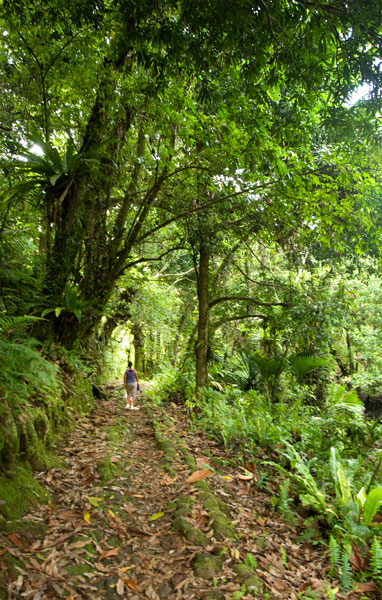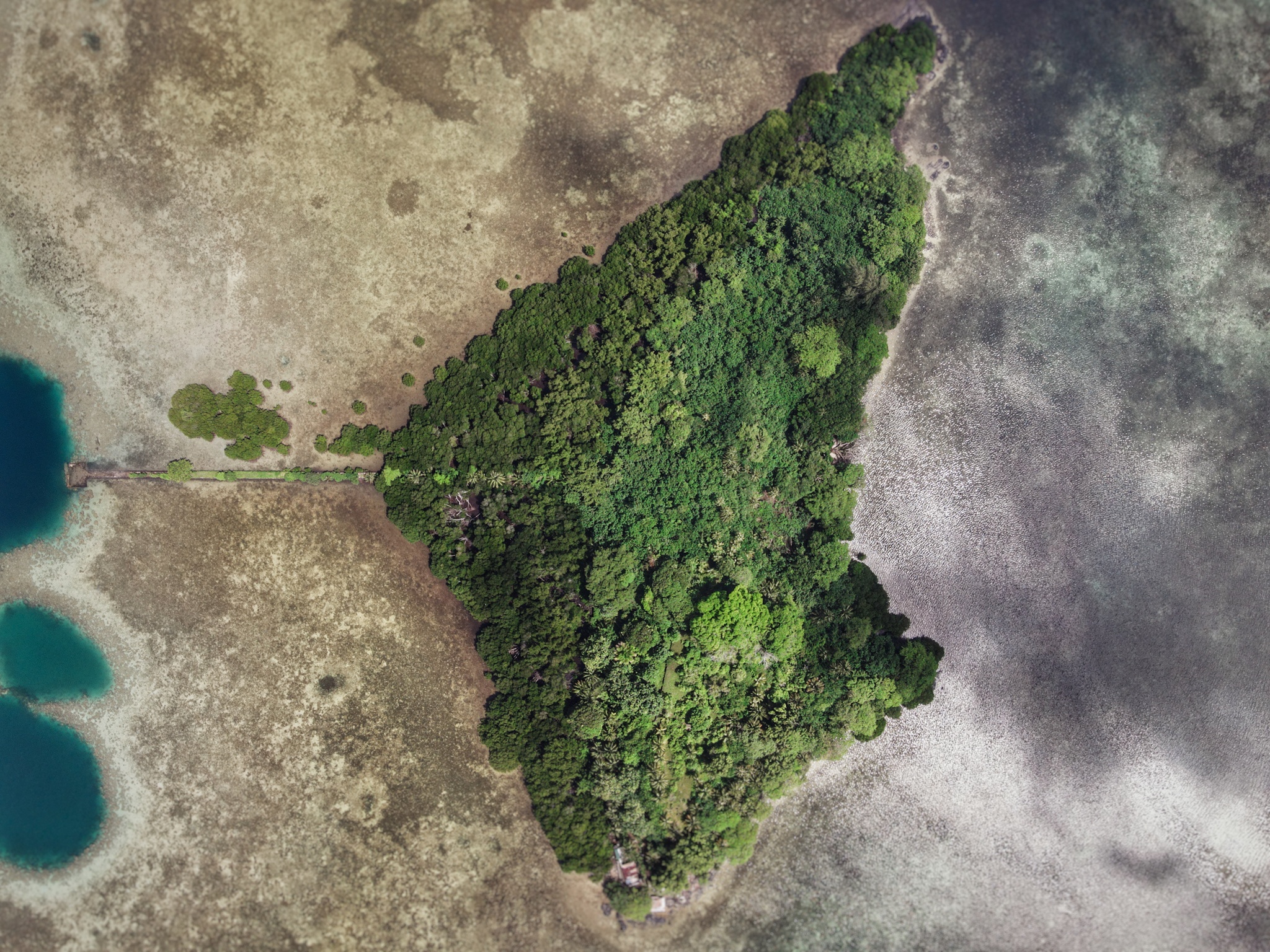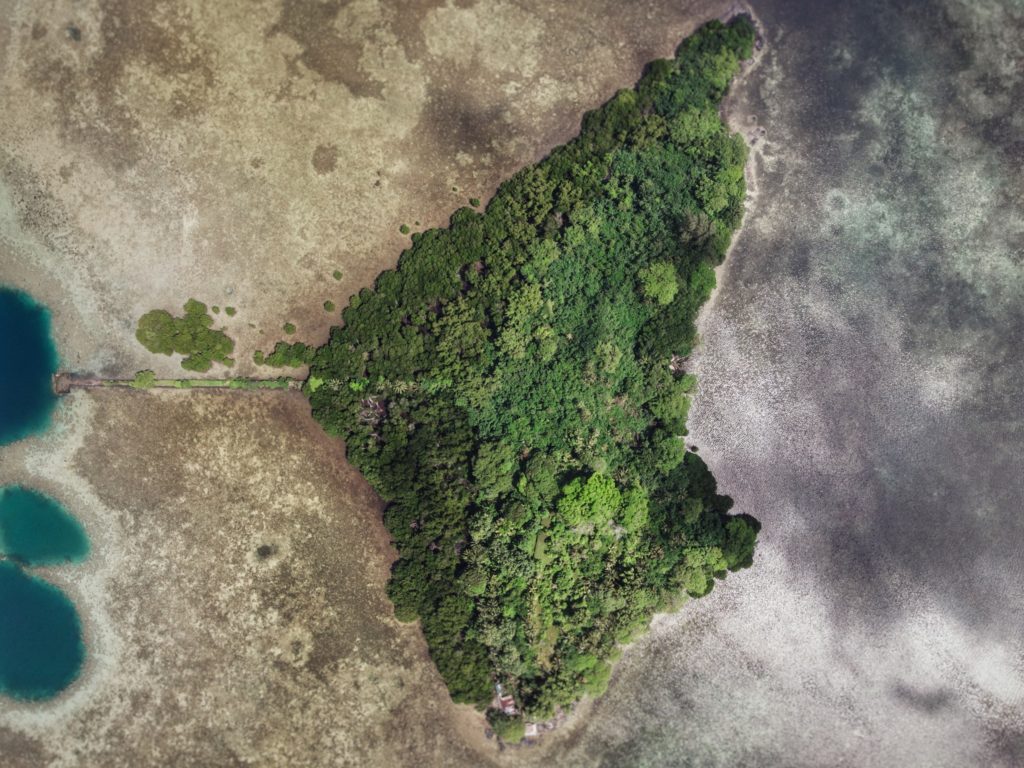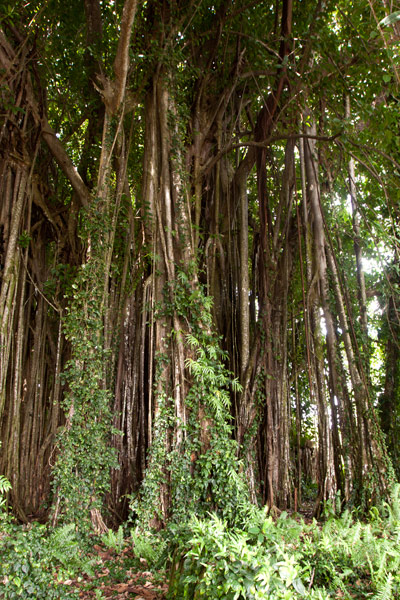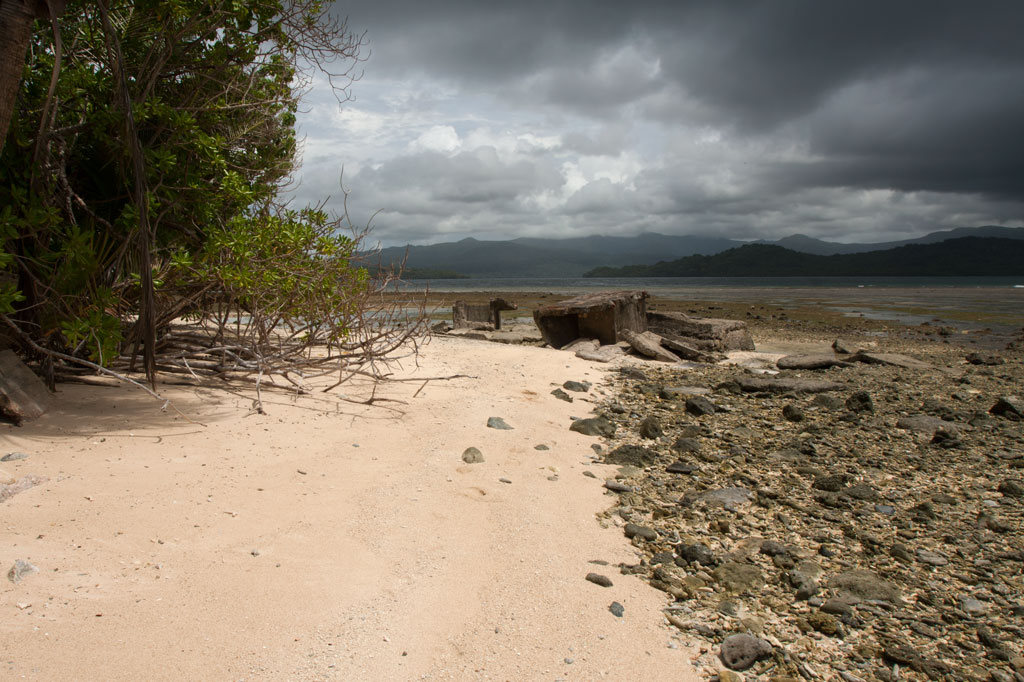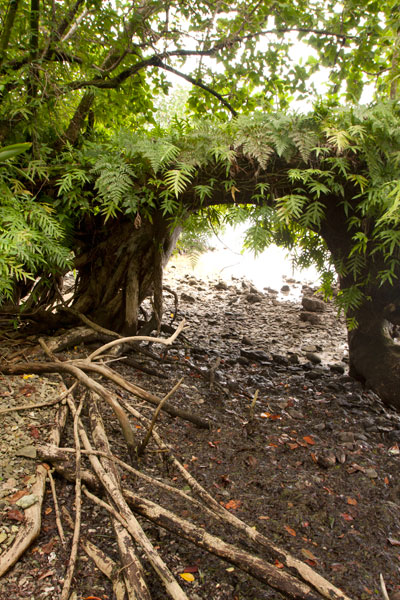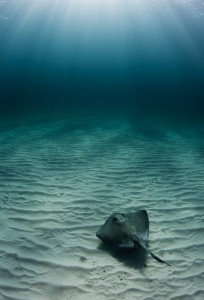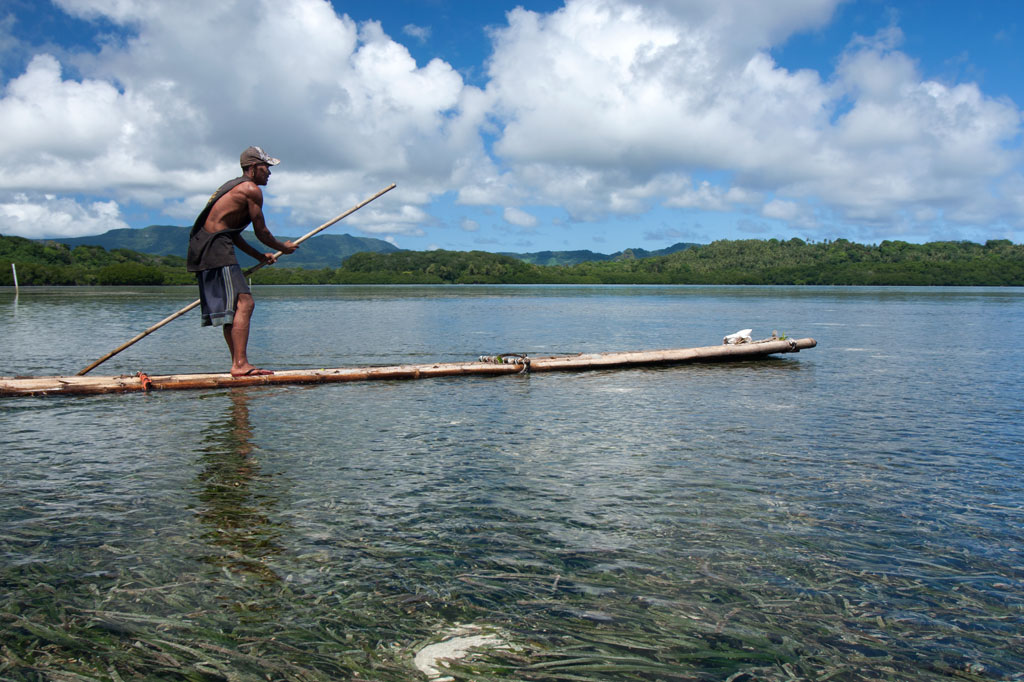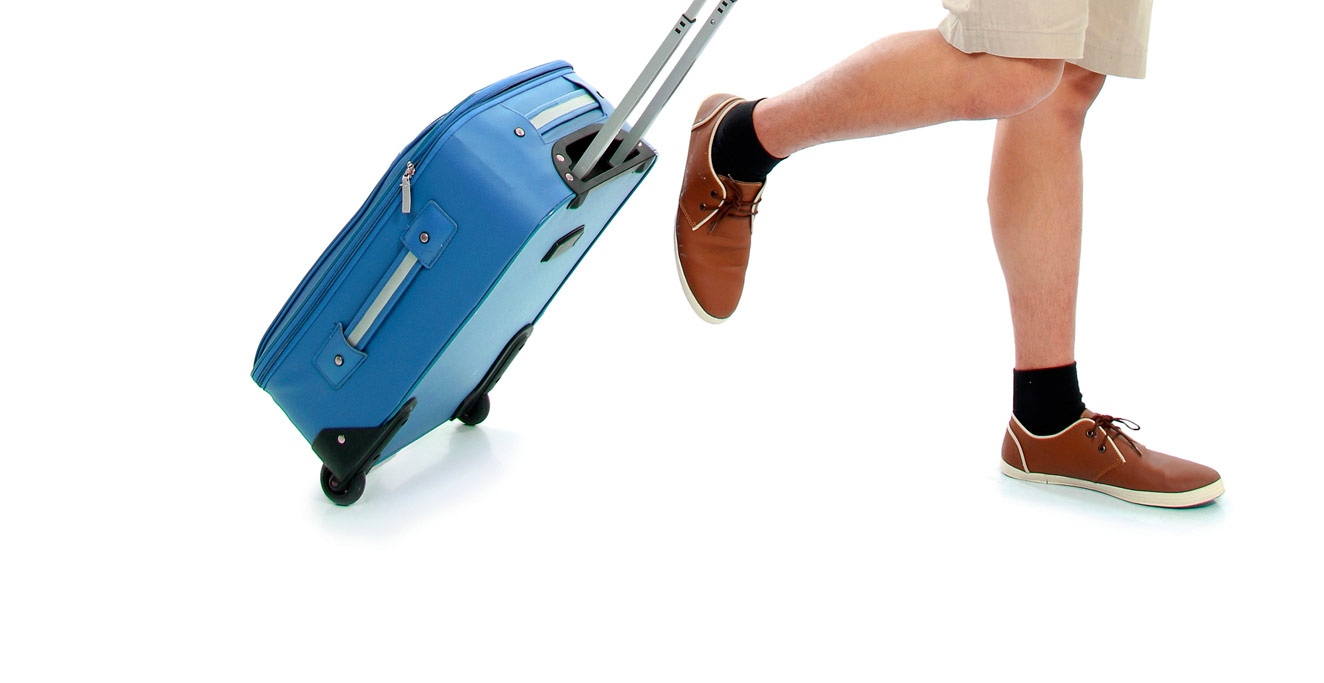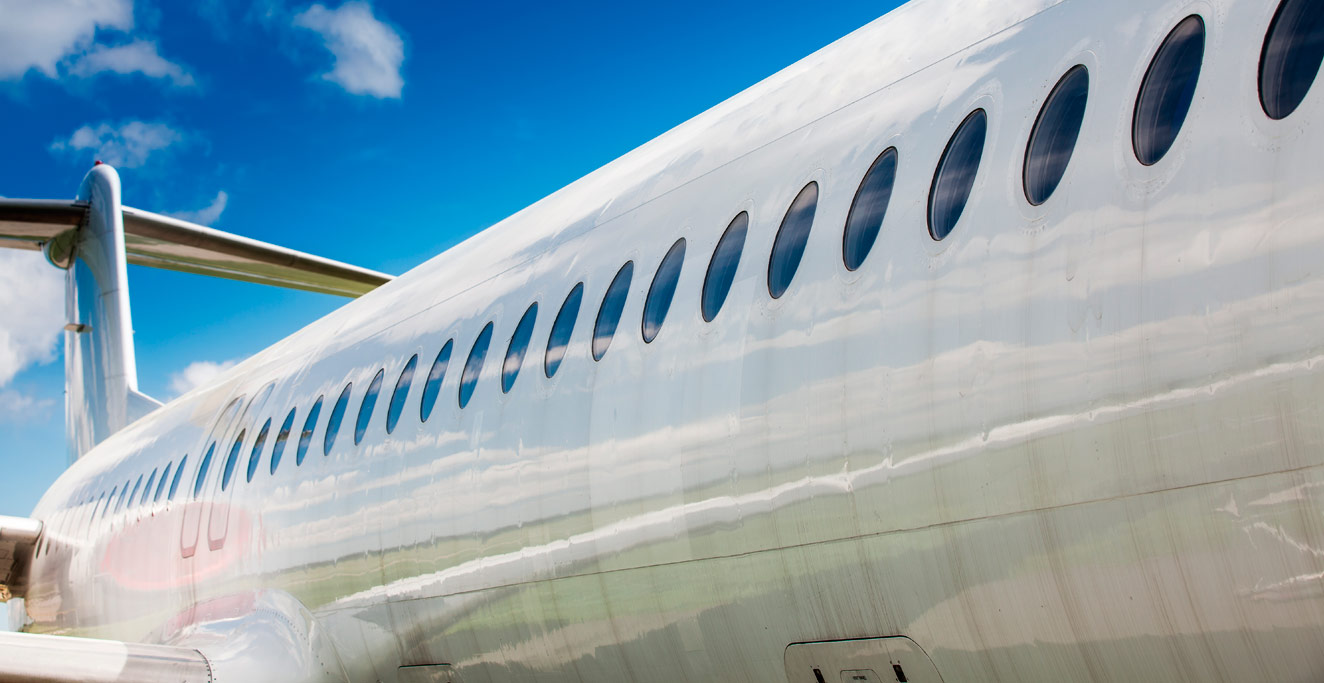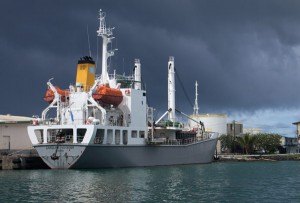 Cash and Visa ATM Card
Cash and Visa ATM Card
Though credit cards have gained a foot-hold with most local hotels, the major stores (Ace Commercial, Ace Hardware, Ace Office Supply, A-One Supermart and Palm Terrace) and some restaurants, everywhere else cash reigns supreme. Personal checks are rarely accepted. Bank of Guam operates two ATMs in Kolonia that will work (theoretically) with any card inscribed with the Visa logo; both are at the bank branch east of town just past the American Embassy. Bank of FSM also has an ATM located right outside of the bank.
 Synthetic or Cotton T-shirts
Synthetic or Cotton T-shirts
With daily temperatures ranging between 27 and 32 degrees Celsius (80 and 90 degrees Fahrenheit) and humidity levels upwards of 90%, you’ll want to stick to light clothing on Pohnpei, especially when doing strenuous activities. Cotton is the coolest, but some of the light synthetic materials dry much faster.
 Synthetic or Cotton Shorts
Synthetic or Cotton Shorts
Same goes for bottom-wear. Keep it light and loose. Shorts are the best choice for hikes on well-established trails without much surrounding underbrush to tear up your legs.
 Synthetic Pants
Synthetic Pants
For any hike not on a high-traffic trail, pants are the best choice for bottom-wear. Bushes, grass, and some very stickery ferns often grow close or partially over a route. If you wear shorts, you’ll be all scratched up in no time. Synthetic materials are best for pants because they stay light when wet, while cotton gets heavy and doesn’t dry in humidity. Make sure they aren’t too tight to give you plenty of room to move and also not so loose that they bag up when wet.

 Swim-wear
Swim-wear
A long history with Puritanical missionaries has made Micronesia a conservative place when it comes to dress — though this is changing slowly (in thanks, partly, to the public pool and Olympic swimming program). Average middle-aged or older residents are still seen swimming fully-clothed. When swimming around Pohnpei’s coastline or in other areas that locals also frequent, dress modestly to avoid offending people. Regular swim shorts or board-shorts are fine for men and women. Women should wear a t-shirt or rash-guard over bikini tops. Bikinis worn openly in public places will attract unwanted attention, but they’re fine at isolated lagoon islands, out on a boat, and on the uninhabited parts of Ahnd and Pakin atolls. Men in Speedo-type swimwear will draw plenty of incredulous stares, though you do see Chinese fishermen swimming in them in public places.
 Sunglasses
Sunglasses
The sunglasses sold on-island are the cheap and mostly useless kind. Bring your own to combat those intense UV rays and save your eyes some wear and tear.
 High SPF Sunscreen
High SPF Sunscreen
Six degrees north of the equator, the sun is absolutely brutal. It doesn’t matter who you are — everyone burns here, even Pohnpeians. Wearing high-rated sunscreen whenever you’re outside is essential. It should be reapplied often, especially if you’re in and out of the water or sweating heavily. Sunscreen is sold on Pohnpei (try Ace Office Supply or Yoshie Enterprises), but it’s probably cheaper to bring some from home. If your skin is fair, you should be using SPF 50 or higher, reapplying often, and staying covered up as much as possible. Be aware that you can get sunburned just as badly on overcast days as in sunny weather. Wear a shirt when snorkeling.
 Hat / Head Protection
Hat / Head Protection
Unless you’re going to be under heavy tree cover all day, bring something solid to keep that noggin from boiling.
 Flip-Flops or Thongs
Flip-Flops or Thongs
Flip-flops, thongs, rubber sandals, or as Pohnpeians usually call them — sohri (a loan word from the Japanese zori) — are standard foot-wear on the island. You can bring your own, but they’re also sold at nearly every major store on the island.
 Tennis Shoes or Light Hiking Shoes
Tennis Shoes or Light Hiking Shoes
Around town, flip-flops, slippers, or sohri are optimal, but when you’re hiking on Pohnpei, you’ll need something that stays on your feet and holds up to abuse. Tennis shoes or well-ventilated light cloth hiking shoes are a good choice for short hikes on well-maintained trails. They’re absolutely terrible, however, if there’s mud, water, or slippery rocks — which is a good share of the time. Expect your shoes to get really, really dirty.
 “Five-Finger” Shoes
“Five-Finger” Shoes
After years of hiking on Pohnpei, we’ve concluded that nothing beats FiveFingers. Nothing. Thinner soles allow you to feel the terrain and cling to it better than with tennis shoes or hiking boots. The use of your toes improves balance and makes slips much less frequent on rocks. They stay on your feet in and out of water and mud and work just as well on hard, dry ground. You’re less likely to get blisters than with traditional shoes. There are a million reasons to use them here. A variety of models are available. We recommend the pioneering brand, Vibram. You’ll want to break them in at home before your trip. They take a little getting used to and your feet will have to toughen up a bit.
 Dry-Bag or Dry-Backpack
Dry-Bag or Dry-Backpack
Imagine 7.5 meters (25 feet) of water falling over the course of a single year! Pohnpei is an extremely rainy place, and everywhere you go, you should be prepared for the very real possibility that you’re going to get rained on. Luckily, there are many dry-bag and dry-pack models on the market these days that will keep all your important stuff completely dry in torrential down-pours, on boats, and when you’re paddling around. If you plan to do any hiking, boating, or paddling, a roll-top style dry backpack is a must-have. Heavy-duty Ziploc bags work great for small items inside your dry-pack as there are rarely any inside pockets or divisions. If hiking is what you’ll be doing most and you don’t want to invest in a dry-pack, you can use a heavy-duty plastic trash compactor bag as a liner inside your conventional backpack.
 Mobile Phone
Mobile Phone
Pohnpei has surprisingly good cellular coverage across the island. You can even use your phones on the top of some mountains and at most of the islands in the lagoon. For the sake of emergency, it’s a good idea to carry a phone with a local SIM card and some credit at all times. CDMA phones don’t work in Micronesia, but pretty much anything that’s unlocked and can take a GSM SIM card will. SIM cards and phone credit can be purchased at the FSM Telecommunications HQ in the middle of town.
 First Aid Kit
First Aid Kit
This should be a no-brainer. Accidents happen, and with slippery rocks, rough terrain, pointy tree branches, and razor-sharp coral, for most people it’s just a matter of time. Carry a good kit and know how to use it. It could save your life.
 Pocket Knife
Pocket Knife
If you go anywhere with a local guide, he’ll bring at least three things: some betel nut, a bottle of water, and a machete. If you’re hiking without a guide, you’ll want to have your own small knife on-hand, at the very least. Quality stainless steel is a must, as Pohnpei’s very air can cause some metals to corrode.
 Water Bottle
Water Bottle
Staying hydrated is key to good health anywhere, but it is especially important in the kinds of climate conditions found on Pohnpei. You should carry water with you everywhere you go (at least 2 liters per person for a full-day hike). We encourage you to GO GREEN and use refillable water bottles rather than contributing to Pohnpei’s formidable trash problem by purchasing disposable bottled water. There is currently no plastic recycling program on the island. If you throw it away, it goes in the landfill — and possibly in the ocean. We recommend Nalgene water bottles. They don’t break or leak and they last practically forever.
 Camera
Camera
Pohnpei is a very photogenic place; the natural environment is stunning and the people are warm and colorful. Any camera will do, but consider carefully how you’re going to protect it from moisture, rain, and splashing water. Keep your camera in a Ziploc back or waterproof case with silica gel when you aren’t using it. Be careful of condensation when going from an air-conditioned space to open air.
 Compass
Compass
Pohnpei is a small island, so it would seem like it would be hard to get lost, but it’s actually very easy to get disoriented in the forests or on the mountains. A good liquid-filled compass is a must-have companion to your Eco-Adventure Map Guide on any self-led excursion.
 Machete
Machete
We don’t recommend that you mess with machetes unless you’re already very comfortable with them. But, if you see this symbol anywhere, it means that the route or trail tends to get over-grown, making a machete a necessity. Furthermore, we’re implying that an excursion of this sort requires a local guide. For locals, the machete is kind of like an extension one’s arm. Machetes are sold at most hardware stores around town.
 Technical Climbing Gear
Technical Climbing Gear
If you plan to do any sport-climbing, you’ll need to bring all your own gear, ropes, everything. Absolutely nothing is for sale on-island. REI ships to the FSM, but you’ll have to wait 2-4 weeks for your orders. One option is to ship ahead general delivery and then pick up your box when you arrive.
 Binoculars
Binoculars
This is a mandatory item of gear for birders. Pohnpei’s rarest and most sought-after birds are hard to get close to. Binocs will help you tick them off your list. The more water-proof they are, the better. Store them as you would your camera.
Outdoor Sports Gear
Pohnpei has no sporting-goods store (Ace Hardware sells some very basic stuff, but nothing specialized or high quality). If you’re planning on doing any outdoor sports on the island like surfing, kiteboarding, kayaking, snorkeling, diving, camping, or biking, you’ll need to bring your own equipment. Pohnpei Surf Club has some surfboards on-hand, but they’re reserved for customers who break all their own during the course of their stay (they also have some kiteboards). Visit the respective pages for each of the adventure sports for more information.
 Eco-Adventure Map Guide(s)
Eco-Adventure Map Guide(s)
Pick these up when you make land-fall. We think you’ll agree our guides are indispensable. They can obtained at Pohnpei Visitors’ Bureau, the Australian Embassy, hotels, restaurants, the public Library, and many other locations.
The Basics >> What to Bring


